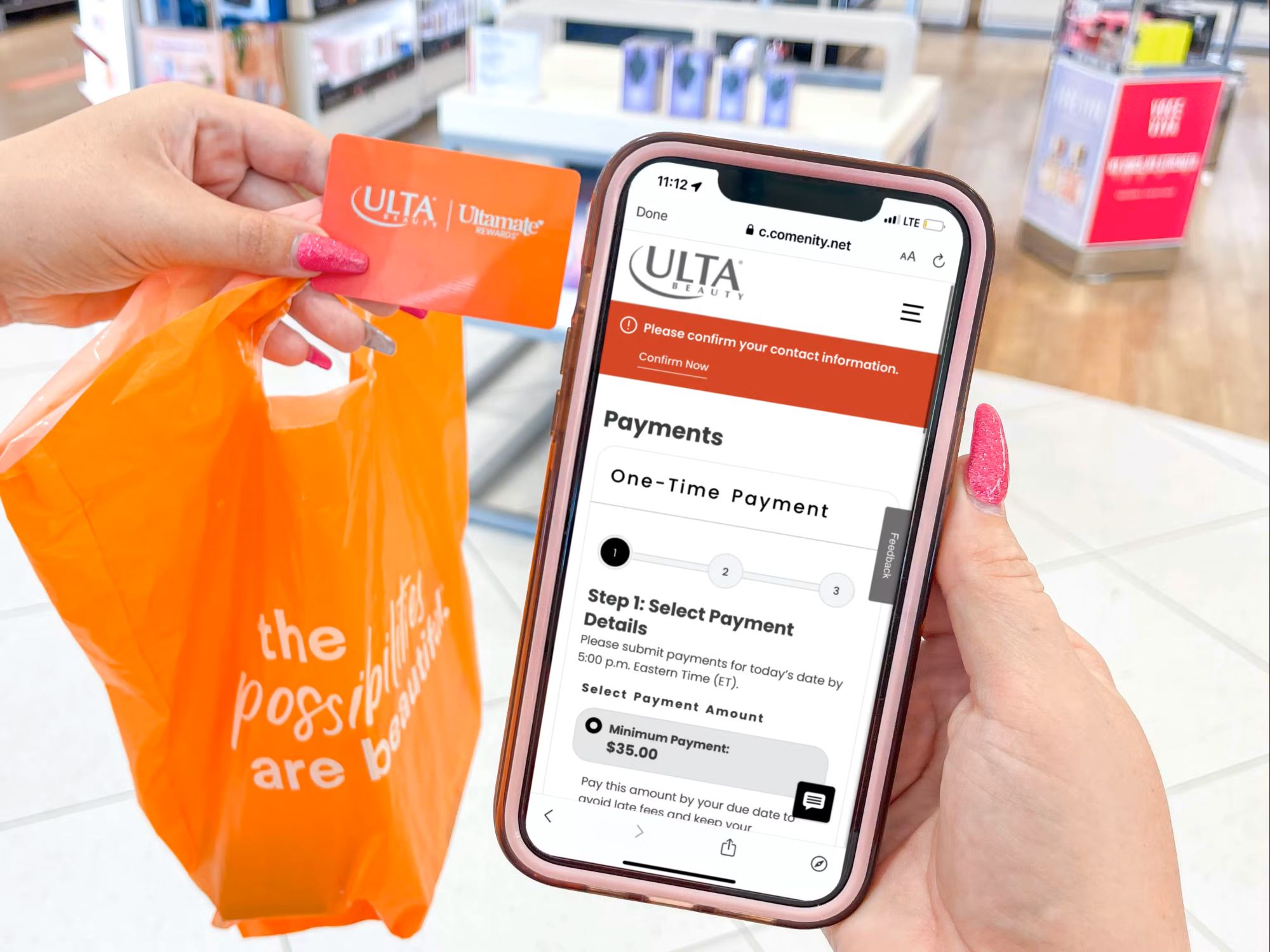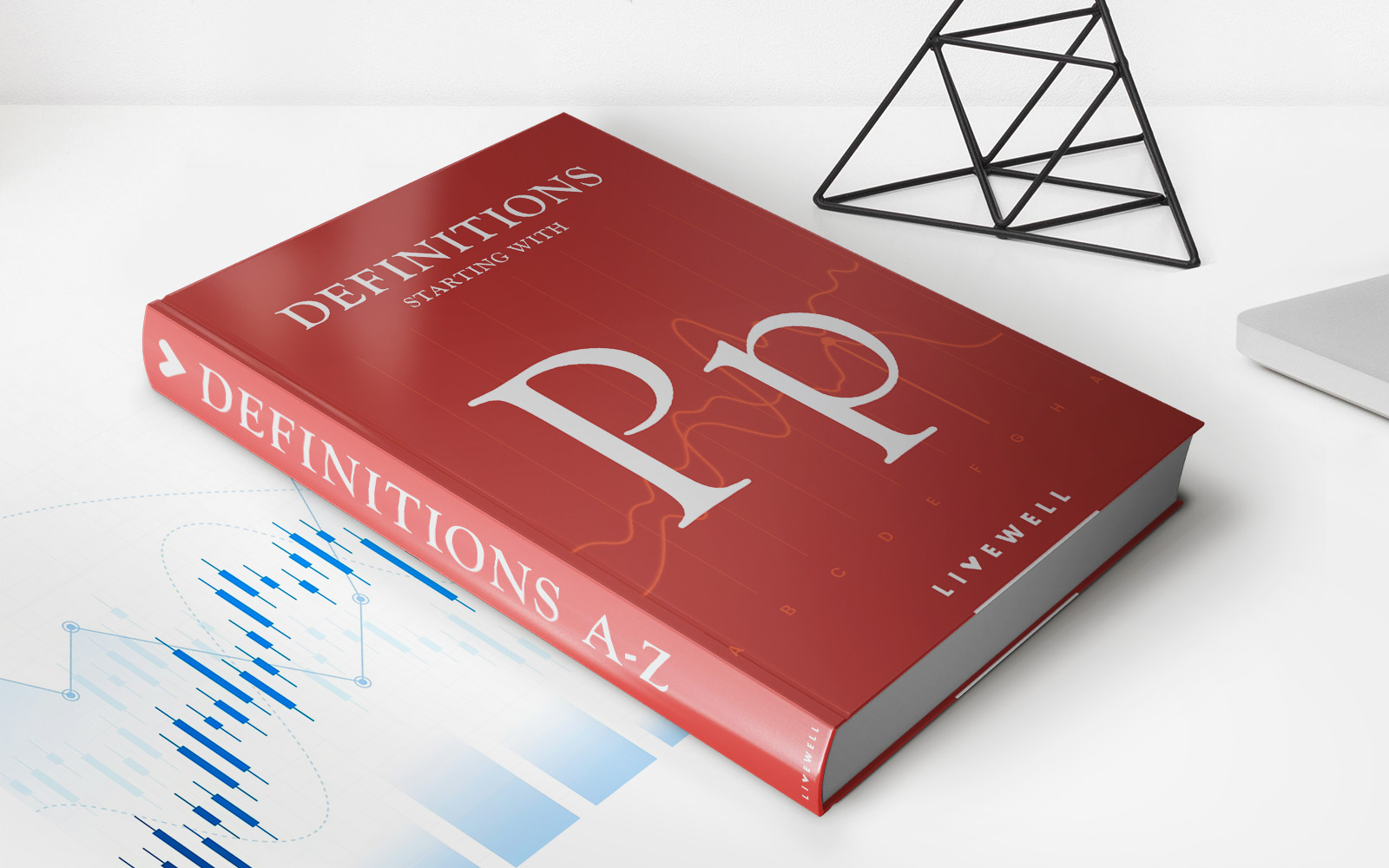

Finance
How Can I Use My EIN To Get Credit?
Modified: February 21, 2024
Learn how to use your EIN (Employer Identification Number) to establish credit and improve your financial standing. Discover the benefits of leveraging your EIN for financing and achieving your financial goals.
(Many of the links in this article redirect to a specific reviewed product. Your purchase of these products through affiliate links helps to generate commission for LiveWell, at no extra cost. Learn more)
Table of Contents
Introduction
As a business owner, you may be familiar with your Employer Identification Number (EIN) and its importance for tax purposes. However, did you know that your EIN can also be used to establish and build credit for your business? Having good credit is crucial for accessing financing options, securing vendor relationships, and expanding your business.
In this article, we will explore how you can leverage your EIN to get credit for your business. We will delve into the steps you need to take to build a solid credit profile using your EIN, and provide useful tips for managing and improving your business credit.
But first, let’s understand what an EIN is. An EIN is a unique nine-digit number issued by the Internal Revenue Service (IRS) to identify your business for tax purposes. It serves as the business equivalent of a social security number, allowing the IRS to track your business’s financial activities.
Building credit for your business is essential because, just like individuals, businesses have their own credit scores and histories. By establishing good credit, you can increase your chances of qualifying for loans, lines of credit, and better payment terms with suppliers and vendors. Additionally, a strong credit profile can enhance your company’s reputation and credibility.
Now that we understand the significance of business credit and the role of an EIN in building credit, let’s dive into the steps you can take to establish and leverage your EIN for credit.
Understanding your EIN
Before we discuss how to use your EIN to get credit, it’s important to have a clear understanding of what an EIN is and how it works.
Your Employer Identification Number (EIN) is a unique nine-digit number assigned to your business by the IRS. It is used to identify your business for tax purposes and is required if you have employees, operate as a partnership or corporation, or if you file certain types of tax returns.
When you apply for an EIN, the IRS issues this number to ensure that your business’s financial activities are accurately reported and separate from your personal finances. It’s important to note that an EIN is not the same as a Social Security Number (SSN) – your EIN is specifically for your business, while your SSN is for personal identification.
Your EIN serves as your business’s unique identifier and is used by various entities, including financial institutions, credit agencies, and government agencies, to track and establish your business’s credit history.
Understanding your EIN can help you navigate the process of building credit for your business. By keeping accurate records and using your EIN consistently for business-related activities, you can establish a solid credit profile and separate your personal and business finances.
It’s important to note that obtaining an EIN does not automatically create a credit history for your business. Just like with personal credit, you need to actively build and manage your business’s credit profile. This involves demonstrating responsible financial behavior, making timely payments to creditors, and establishing relationships with lenders and vendors who report to credit bureaus.
Now that we have a good understanding of what an EIN is and how it works, let’s explore the steps you can take to build credit using your EIN.
Building credit with your EIN
Building credit for your business using your EIN is an essential step in establishing a strong financial foundation. Here are some key strategies to help you build credit using your EIN:
1. Open a business bank account: Separate your personal and business finances by opening a dedicated business bank account. This will help you track your business expenses and income more effectively and establish a clear financial history for your business.
2. Apply for a business credit card: Choose a business credit card that reports to the credit bureaus in your business’s name, rather than your personal credit. Use the card responsibly, making regular on-time payments and keeping your credit utilization low. This will demonstrate your business’s creditworthiness and boost your credit score.
3. Establish trade credit: Apply for trade credit accounts with suppliers and vendors who report payments to credit bureaus. Make sure to pay your invoices on time and in full to build a positive credit history.
4. Obtain a business loan: Securing a business loan can help establish credit for your business. Start with smaller loan amounts that are manageable for your business. Make timely repayments to demonstrate your ability to handle debt responsibly.
5. Monitor your business credit: Regularly check your business credit reports from the major credit bureaus to identify any errors or inaccuracies. Stay vigilant about potential fraudulent activity and address any issues promptly.
Remember, building credit with your EIN takes time and consistent financial responsibility. Focus on making timely payments, keeping your credit utilization low, and establishing positive relationships with lenders and vendors.
In the next section, we will explore how you can establish a business credit profile using your EIN.
Establishing a business credit profile
Establishing a business credit profile is crucial for building a strong financial foundation for your company and accessing favorable credit options. Here are the key steps to help you establish a business credit profile:
1. Register your business: Ensure that your business is legally registered and has all the necessary licenses and permits. This formalizes your business structure and helps establish its identity separate from your personal finances.
2. Obtain an EIN: Apply and obtain an Employer Identification Number (EIN) from the IRS. This unique nine-digit number serves as your business’s identification for tax purposes and is crucial for establishing credit.
3. Open a business bank account: Open a business bank account in your company’s name. This will help you keep your business and personal finances separate, which is essential for building a strong credit profile.
4. Incorporate or form an LLC: Consider incorporating your business or forming a Limited Liability Company (LLC). This provides an additional layer of legal protection, further distinguishing your business’s identity from your personal finances.
5. Establish a business credit file: Contact business credit bureaus, such as Dun & Bradstreet, Experian, and Equifax, to create a business credit file. Provide them with the necessary information about your business, such as your EIN, financial statements, and trade references.
6. Build trade credit relationships: Establish relationships with suppliers and vendors who report payments to business credit bureaus. This can include suppliers of goods or services, as well as leasing companies. Make timely payments to build a positive credit history.
7. Pay bills on time: Timely bill payments are crucial for establishing a solid credit profile. Pay all your business-related bills, loans, and credit card payments on or before the due dates to demonstrate your financial responsibility.
8. Monitor and review your credit reports: Regularly review your business credit reports from the major credit bureaus to ensure accuracy and identify any potential errors or discrepancies. Address any issues promptly to maintain a strong credit profile.
By following these steps, you can establish a solid business credit profile, which will provide a solid foundation for securing credit and financing options for your business.
In the next section, we will discuss how to apply for business credit using your EIN.
Applying for business credit using your EIN
Now that you have established a business credit profile using your EIN, it’s time to apply for business credit. Here are some steps to help you navigate the process:
1. Identify potential lenders: Research and identify lenders who offer business credit options that align with your needs. This can include traditional banks, online lenders, or credit unions that specialize in small business financing.
2. Gather required documentation: Prepare the necessary documentation to support your credit application. This can include financial statements, tax returns, bank statements, and any other documentation that demonstrates the financial health and stability of your business.
3. Prepare a strong business case: Craft a compelling business case that highlights your business’s strengths, such as revenue growth, market potential, and a solid track record. This will help lenders assess your creditworthiness and increase your chances of approval.
4. Complete the application: Fill out the credit application thoroughly and accurately. Provide your EIN, business information, financial details, and any other requested information. Review the application carefully before submitting it.
5. Follow up: After submitting your application, follow up with the lender to ensure they have received it and to inquire about the status of your application. Be prepared to provide additional information or clarify any details if requested.
6. Negotiate terms: If you receive credit offers, carefully review the terms and conditions. Negotiate terms that are favorable for your business, including interest rates, repayment schedules, and credit limits. Keep in mind your business’s financial capacity to repay the debt.
7. Maintain a strong business credit profile: As you acquire and use business credit, make sure to manage it responsibly. Make payments on time, keep credit utilization levels low, and maintain positive relationships with lenders and vendors who report to credit bureaus.
Remember, the process of applying for business credit using your EIN may involve multiple applications and interactions with lenders. Be patient and persistent, and consider seeking assistance from financial professionals if needed.
In the next section, we will explore tips for managing and improving your business credit.
Managing and improving your business credit
Once you have obtained business credit using your EIN, it’s essential to effectively manage and continuously work on improving your business credit profile. Here are some tips to help you in this process:
1. Monitor your credit regularly: Keep a close eye on your business credit reports from major credit bureaus and regularly check for any changes, errors, or discrepancies. Monitoring your credit will help you identify and address any issues promptly.
2. Pay bills on time: Timely bill payments are critical for maintaining a good credit score. Pay your business-related bills, loans, and credit card payments on or before the due dates to demonstrate your financial responsibility.
3. Keep credit utilization low: Try to keep your credit utilization ratio—the percentage of available credit you are using—below 30%. Keeping this ratio low shows lenders that you are not overly reliant on borrowed funds and can manage credit responsibly.
4. Establish positive trade references: Continue building relationships with suppliers and vendors who report payments to business credit bureaus. Make consistent and timely payments to cultivate positive trade references and strengthen your credit profile.
5. Limit new credit applications: Be mindful of applying for new credit frequently. Each credit application generates a hard inquiry on your credit report, which can temporarily lower your credit score. Only apply for credit that you genuinely need and for which you meet the eligibility criteria.
6. Avoid maxing out credit limits: While it may be tempting to utilize the full credit limits available to you, it’s generally advisable to keep your credit utilization below 30%. Maxing out credit limits can be seen as a sign of financial instability and may negatively impact your credit score.
7. Build a diverse credit portfolio: Consider having a mix of different types of credit, such as business credit cards, lines of credit, and term loans. This demonstrates your ability to manage multiple credit accounts and can positively impact your credit score.
8. Review and dispute errors: Regularly review your business credit reports and contact the credit bureaus if you spot any errors or discrepancies. Dispute any inaccuracies promptly with the credit bureaus to ensure your credit information is correct.
By following these tips, you can effectively manage and improve your business credit profile over time. Remember that building and maintaining good credit is an ongoing process that requires consistent financial responsibility and monitoring.
In the final section, we will discuss common mistakes to avoid when using your EIN for credit.
Common mistakes to avoid when using your EIN for credit
While leveraging your EIN to build credit for your business is essential, it’s equally important to be aware of common mistakes that can hinder your credit-building efforts. Here are some common mistakes to avoid:
1. Not separating personal and business finances: Mixing personal and business finances can lead to confusion and make it difficult to track and manage your business’s credit. Always maintain separate bank accounts and credit cards for your personal and business expenses.
2. Neglecting to establish a business credit profile: Some business owners assume that their personal credit history is sufficient for their business. However, it’s essential to build a separate business credit profile using your EIN to access better financing options and protect your personal credit.
3. Missing payments: Timely payments are crucial for maintaining good credit. Missing payments or paying late can negatively impact your credit score and make it harder to obtain credit in the future. Set up reminders and automate payments to prevent this oversight.
4. Maxing out credit limits: Maxing out your credit limits can harm your credit utilization ratio and signal financial instability to lenders. Keep your credit utilization below 30% to show that your business can manage credit responsibly.
5. Applying for excessive credit: Applying for multiple credit accounts within a short period can generate numerous hard inquiries on your credit report, leading to a temporary drop in your credit score. Only apply for credit when you genuinely need it and meet the eligibility requirements.
6. Ignoring credit monitoring and reporting: Failing to regularly monitor your business credit reports can allow errors or inaccuracies to go unnoticed, and it could also hinder your ability to track your progress and address any potential issues in a timely manner. Stay vigilant and monitor your credit regularly.
7. Overlooking the importance of diverse credit: It’s important to have a diverse credit portfolio that includes different types of credit, such as business credit cards, lines of credit, and term loans. This demonstrates your ability to handle different credit accounts and can positively impact your creditworthiness.
By avoiding these common mistakes, you can increase your chances of successfully building and maintaining a strong credit profile for your business. It’s important to stay proactive, be financially responsible, and continuously monitor and improve your business credit over time.
Finally, let’s conclude our discussion on leveraging your EIN for credit.
Conclusion
Building credit for your business using your EIN is a crucial step towards establishing a strong financial foundation. By following the steps outlined in this article, you can effectively leverage your EIN to access credit options, secure favorable financing terms, and grow your business.
Start by understanding the importance of your EIN and how it functions as your business’s unique identifier for tax purposes. Establishing a business credit profile using your EIN involves opening a dedicated business bank account, applying for a business credit card, and building trade credit relationships with vendors who report payments to credit bureaus.
When applying for business credit using your EIN, it’s important to identify potential lenders, gather required documentation, and present a compelling business case. Once approved, managing your business credit involves monitoring your credit reports, making timely payments, keeping credit utilization low, and building positive trade references.
Avoid common mistakes such as commingling personal and business finances, missing payments, maxing out credit limits, and applying for excessive credit. By steering clear of these pitfalls, you can maintain a strong business credit profile and improve your chances of securing future credit options.
Remember, building and managing business credit is an ongoing process. Be proactive in monitoring your credit, dispute any errors, and continuously work on strengthening your credit profile. By doing so, you can enhance your business’s financial credibility, gain access to better financing options, and pave the way for future growth and success.
Utilize your EIN wisely and make it work for you in building a solid credit foundation for your business. With dedication, responsible financial management, and a commitment to building positive credit habits, you can unlock greater opportunities and propel your business forward.
By following these guidelines and avoiding common mistakes, you can leverage your EIN effectively to build credit for your business and establish a strong financial footing for long-term success.














